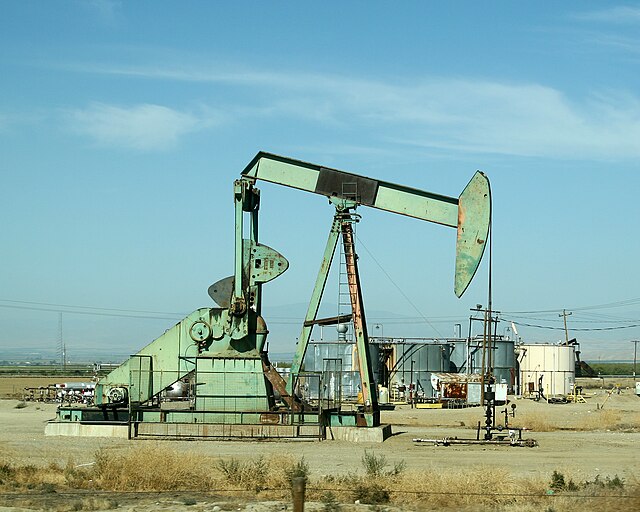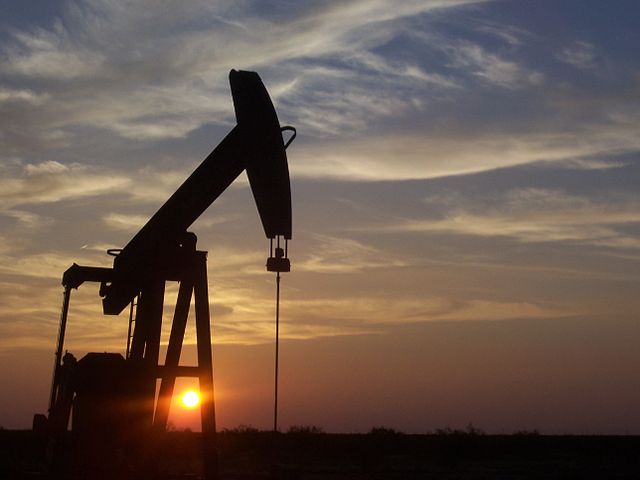A pumpjack is the overground drive for a reciprocating piston pump in an oil well.
A pumpjack operating at an oil well in Natchez, Mississippi
Picture of a pump jack used to mechanically lift liquid out of the well if there is not enough bottom hole pressure for the liquid to flow all the way to the surface.
The densely developed Kern River Oil Field, California: Hundreds of pumpjacks are visible in the full-size view. This style of development was common in the oil booms of the early 20th century.
An oil well is a drillhole boring in Earth that is designed to bring petroleum oil hydrocarbons to the surface. Usually some natural gas is released as associated petroleum gas along with the oil. A well that is designed to produce only gas may be termed a gas well. Wells are created by drilling down into an oil or gas reserve and if necessary equipped with extraction devices such as pumpjacks. Creating the wells can be an expensive process, costing at least hundreds of thousands of dollars, and costing much more when in difficult-to-access locations, e.g., offshore. The process of modern drilling for wells first started in the 19th century but was made more efficient with advances to oil drilling rigs and technology during the 20th century.
The pumpjack, such as this one located south of Midland, is a common sight in West Texas
Early oil field exploitation in Pennsylvania, around 1862
Galician oil wells
1904 oil well fire at Bibi-Heybat







